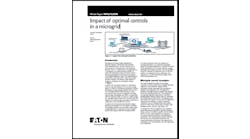Groups struggle to find the elusive ‘value of resilience’ as the electric grid reveals its fragility
During an extreme heat spell several years ago, my house lost power for a week. We were taking care of aging parents and had no power or water. By week’s end, I would have emptied my life’s savings for some working kilowatts.
After the power was restored, I quickly forgot the pain and, like most people, again took reliable electricity for granted.
That’s why it is so hard to put a value on electric resilience. It’s often subjective and changes based on the circumstance.
But getting the number right — determining exactly what power outages cost society — is crucial, as two leading organizations for state regulators and policymakers show in a report issued yesterday: “Valuing Resilience for Microgrids: Challenges, Innovative Approaches, and State Needs.”
“Threats to the electricity grid are increasing in frequency, severity and impact. Without knowing how much a given resilience investment will benefit customers or society more broadly, investors, policymakers and regulators are less likely to make or approve such investments, and less able to prioritize those investments,” says the report by the National Association of Regulatory Utility Commissioners (NARUC) and the National Association of State Energy Officials (NASEO).
Old grid fixes not working
2021 was a particularly tough year for the power grid. Using figures from the National Oceanic and Atmospheric Administration, the report says that in the first six months of 2021 eight climate disasters caused more than $29.4 billion in damage and led to 331 deaths.
In February 2021, Winter Storm Uri shut down power for millions of Texans for days, leaving many without heat or water. In the fall of 2021, Hurricane Ida knocked out power to 1.2 million electric customers in eight states. After the storm, the temperature rose to 100 degrees while electric customers remained without power.
Something needs to change, and the old grid fixes aren’t working, as the report explains: “With extreme weather events and no-notice events such as cybersecurity breaches occurring at greater frequency and intensity, traditional reliability investments that may have powered through previous events are no longer meeting customer needs and expectations.”
“On the Gulf Coast, for example, Entergy’s billions of dollars of investments in concrete and steel transmission and distribution poles and substation elevation failed to prevent widespread, multi-day outages driven by Hurricane Ida’s excessive wind speeds,” the report says. “In early 2021, Oregon’s Bootleg Fire burned more than 100,000 acres and led to important transmission lines, including those providing electricity to the California grid for peak demand, going down,” the report says.
What is resilience?
With hurricanes, fires and heat waves undermining the electric grid, the “concept of resilience has emerged as a priority for the energy system,” the report says.
Resilience goes beyond electric reliability — the ability to meet routine recurring charges. Resilience is broader and more demanding, encapsulating “the system’s ability to anticipate, absorb, adapt to and recover from all threats, including high-impact, low-frequency (HILF) disruptions like 2021’s most severe winter and summer storms,” the report says.
Determining the value of resilience
So the pressure is on to capture the elusive value of resilience. And national labs, utilities, researchers and government agencies are on it.
As summarized by the report, the solutions they are working on include:
- The Interruption Cost Estimator 2.0 calculator, a project of the Lawrence Berkeley National Laboratory and the Edison Electric Institute, which is expected to be completed in 2023.
- The Customer Damage Function Calculator by the National Renewable Energy Laboratory, released in 2021.
- The Social Burden Method by Sandia National Laboratories and the University of Buffalo, piloted in 2021-2022.
- The FEMA Benefit-Cost Analysis Tool by the Federal Emergency Management Agency, issued in 2021.
- The Power Outage Economics Tool by Lawrence Berkeley National Laboratory and Commonwealth Edison, piloted in 2021-2022.
The calculators take various approaches. The Customer Damage Function Calculator helps electric customers calculate power interruption costs based on specific losses that they expect. The Social Burden Method emphasizes the needs of communities during power outages, while the FEMA tool quantifies the loss of emergency services during power outages. The Power Outage Economics Tool estimates the economic impact of long power outages and takes into account how customers adapt. And the upcoming Interruption Cost Estimator 2.0 is populated based on new willingness-to-pay surveys and geographic outage costs.
Others are looking at different ways to value resilience, including economywide approaches. The New York State Energy Research and Development Authority, for example, examined what power outage would cost a community as part of its NY Prize microgrid incentive program.
Adding to the effort, several states now incorporate resilience strategies. Some have incorporated microgrid tariffs and other microgrid support programs, which are outlined in the report.
Hope
Despite the work to date, the microgrid industry continues to have a math problem — an inability to quantify its most sought-after benefit. No universally accepted tool exists, but “some approaches in development offer hope,” the report says.
All of the work is worth it.
“Improving how PUCs and state energy offices value resilience will lead to more investments in resilience technologies such as microgrids and better outcomes for ratepayers, taxpayers and society,” the report says.
Interested in learning more about microgrids and the value of resilience? Join us in Philadelphia June 1-2 for Microgrid 2022: Microgrids as Climate Heroes.







